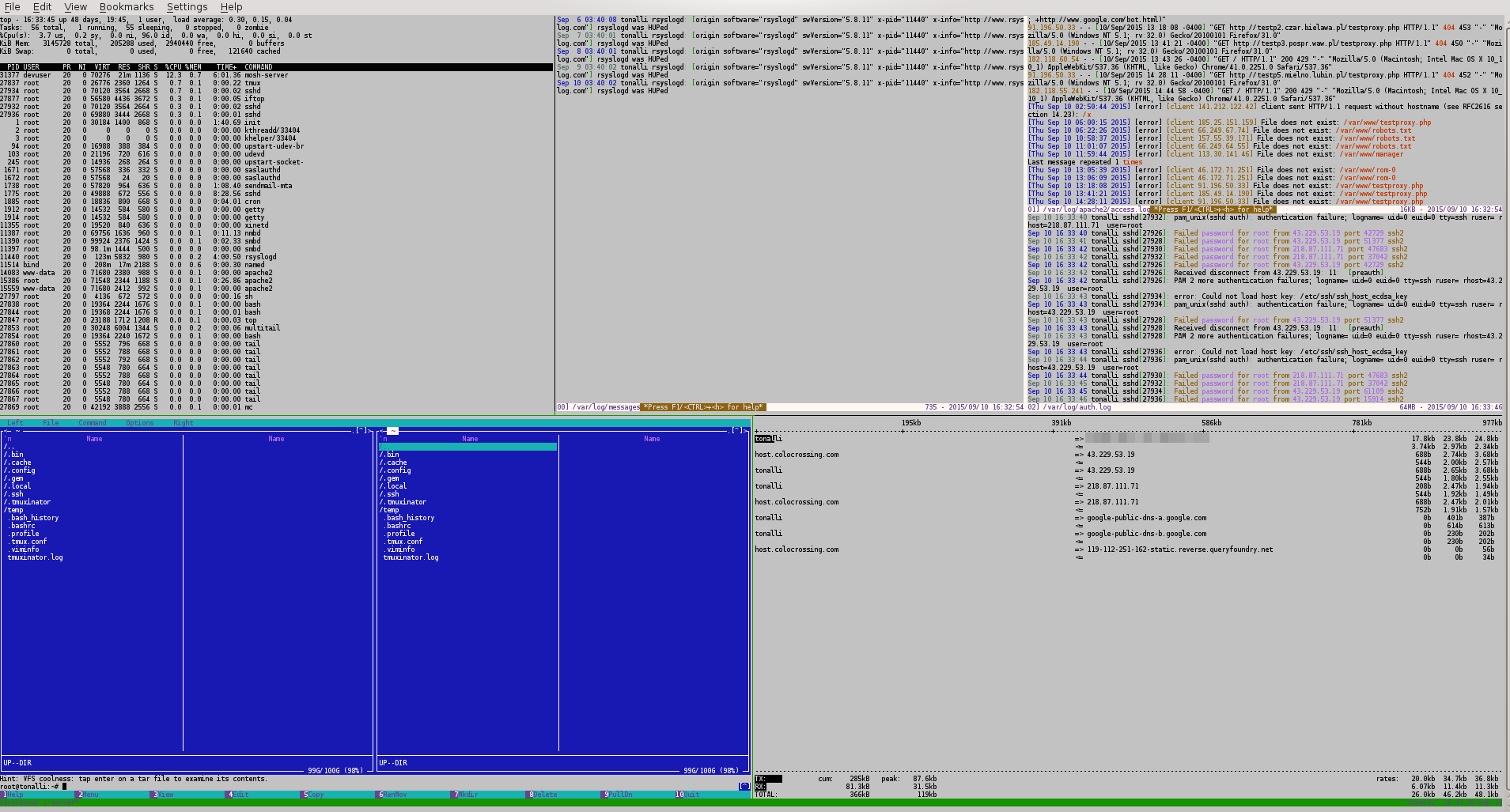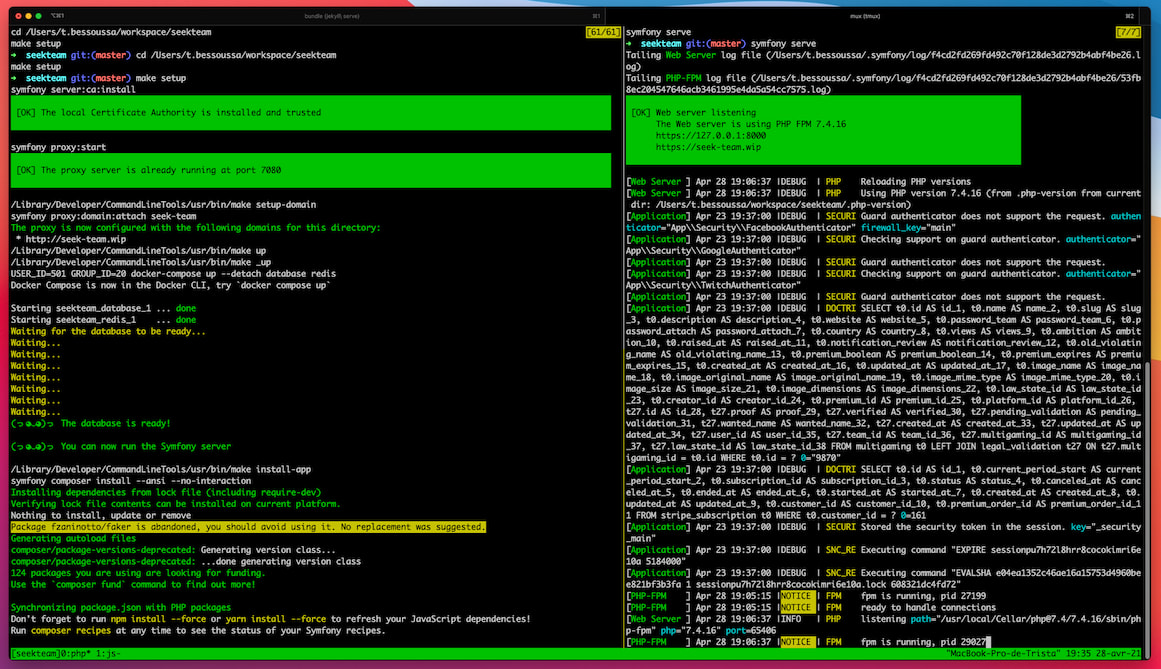

- #Tmuxinator layout options how to
- #Tmuxinator layout options install
- #Tmuxinator layout options code
- #Tmuxinator layout options series
- #Tmuxinator layout options windows
However, the pain point comes when rebooting. Context switching is super easy, as I can just detach from a session, and then re-attach to another one that tmux has kept running for me in the background. A single small session project might consist of a web API service and a separate front-end - each comprising Vim editor panes, and a mix of other things.
#Tmuxinator layout options windows
For example, I use tmux as my primary development environment, and make use of multiple windows and panes for things like Vim, source control, logs, and running commands.Īt any given time, I might have a handful of tmux sessions running (one for each project). However, if, like me, you use the terminal as a primary development environment, things don’t work quite so nicely out of the box. If you use workspaces then you don’t need to go through the tedious process of setting everything back up again each time you switch project, re-open your editor, or reboot your computer. Often, each project can have its own workspace, too.

Such workspaces let you save your project’s development configuration to disk - things like the project directory, open files, editor layout, integrated terminal commands, and more. One of these is the notion of projects or workspaces.
#Tmuxinator layout options code
IDEs and richly-featured text editors - such as VS Code and Sublime Text - support many great features. Disclaimer: The challenge focuses on writing frequency rather than quality, and so posts may not always be fully planned out!
#Tmuxinator layout options series
But if you have some Tmuxinator tips you can’t do without, please feel free to share in the comment section.This article is one of a series of posts I have written for the 100 Days to Offload challenge. These are just 3 quick tips that makes our lives easier. I find it’s a much better option than adding the whole Tmuxinator config into the Readme, since you will have to keep both versions in sync with every minor change. Now every time your tmuxinator config is updated in the repo, you will have the latest version available. Ln -ls local-config/project-name.yml ~/.tmuxninator When a new person starts to work on the project, you only have to run We are not starting VIM using the vim command, but the $EDITOR ENV variable, allowing anyone to pick their favorite.Īdd a local-config folder to your project and copy your project-name.yml tmuxinator ready file.

Worst case, it gives a point of reference for people who have a different setup best scenario, it becomes the defactor way of starting the application. If you maintain your files well, I would recommend that you share them with your team. You can use the 5 tmux standard layout, or define your own TIP #3, share your tmuxinator file with everyoneĪs seen with TIP #2, it’s useful to put some elements on configuration in Tmuxinator itself. If you combine this window layout with your Tmux windows movement VIM like and the Zoom shortcut you then have a very powerfull interface at your fingertips. This means that my coding window looks like this: Windows : - editor : layout : main-vertical panes : - $EDITOR - bundle exec guard - server : heroku local - console : rails c - logs : tail -f log/development.log I don’t always want to have Mongo (or ES) running when I boot my machine, you can, using homebrew services if you’re using Mac, write your pre command like this: This is extremely useful to launch related services that you don’t wan’t to have always running on your machine.įor example, one of our projects is using MongoDB and Elasticsearch. Tmuxinator has a very useful pre that will be run before any Tmux windows are created.
#Tmuxinator layout options install
Now, installing a new Ruby version will automatically install the Tmuxinator gem.

I’m not an RBenv expert but this plugin looks like a good solution. To have Tmuxinator installed alongide every new version of Ruby you would install, just edit ~/.rvm/gemsets/default.gems and add tmuxinator at the bottom of the file. There is nothing more fustrating than cloning a new project, installing your Ruby version or gemset and the realising that your favorite tool is not there.
#Tmuxinator layout options how to
At Cookies for example, everybody uses Tmux and Tmuxinator, regardless of their terminal or editor choice.įor those of you who have never heard of Tmuxinator, it’s a fantastic Ruby gem that allows you to preconfigure, on a project basis, your tmux views.Īfter a few years using it, we’ve picked up some tips on how to make the most of it. As a team, it’s nice to have a ground set of similar tools.


 0 kommentar(er)
0 kommentar(er)
